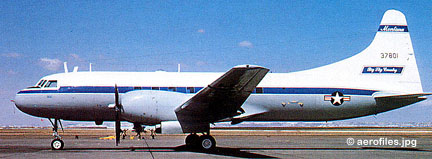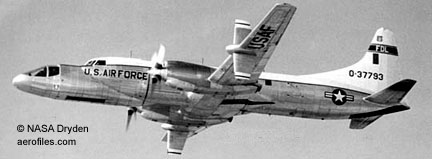Deep stall recovery
- Newbie

- Posts: 7
- Joined: 29 Jan 2004, 15:36
Hello guys, I'im starting to play Falcon 4 SP3.
The question is this: on the check list for deep stall recovery, the second step is:
Is this correct?
Other little thing... where's the wheel brake on the F-16?
thanks
The question is this: on the check list for deep stall recovery, the second step is:
- Throttle: Idle.
Is this correct?
Other little thing... where's the wheel brake on the F-16?
thanks
- Elite 2K

- Posts: 2738
- Joined: 21 Oct 2003, 05:12
Not this is not wrong, it's quite right. You first have to understand the nature of stalls.
For one, stalls have very little to do with airspeed, and almost everything to do with angle of attack...AoA...Alpha.
Once ciritical AoA is reached, the angle at which the airfoil stalls, the only way to restore laminar flow is to reduce the AoA back below critical. Once in a stalled condition, all the thrust in the world isn't going to get you flying again, until flow is reestablished back below critical AoA. Once under critical AoA, (which, for most aircraft is typically 22-25 degrees)airflow reestablishment is almost instantaneous. If you've ever done stalls in any aircraft, you'll notice this phenomenon quite readily. So reducing thrust to idle will make that process simpler by not inducing any unwanted forces to the aircraft while it's in a stalled condition.
Remember, the #1 priority in a stall is to restore laminar airflow over the airfoil....then you'll regain flught, and full control.
For one, stalls have very little to do with airspeed, and almost everything to do with angle of attack...AoA...Alpha.
Once ciritical AoA is reached, the angle at which the airfoil stalls, the only way to restore laminar flow is to reduce the AoA back below critical. Once in a stalled condition, all the thrust in the world isn't going to get you flying again, until flow is reestablished back below critical AoA. Once under critical AoA, (which, for most aircraft is typically 22-25 degrees)airflow reestablishment is almost instantaneous. If you've ever done stalls in any aircraft, you'll notice this phenomenon quite readily. So reducing thrust to idle will make that process simpler by not inducing any unwanted forces to the aircraft while it's in a stalled condition.
Remember, the #1 priority in a stall is to restore laminar airflow over the airfoil....then you'll regain flught, and full control.
Do your homework, Tiger!
- Elite 2K

- Posts: 2809
- Joined: 05 Sep 2003, 20:36
An excellent article on Deep Stall recovery techniques from three acknowledged masters (doubt anyone here can describe it any better):
http://www.codeonemagazine.com/archives ... index.html
The 'wheel brakes' are activated by pushing on the tops of the rudder pedals, referred to as "toe brakes". Pushing both equally slows the jet in a straight line. Taxi turns are done with differential braking, pushing one toe brake more than the other.
http://www.codeonemagazine.com/archives ... index.html
The 'wheel brakes' are activated by pushing on the tops of the rudder pedals, referred to as "toe brakes". Pushing both equally slows the jet in a straight line. Taxi turns are done with differential braking, pushing one toe brake more than the other.
Reality Is For People Who Can't Handle Simulation
- Newbie

- Posts: 7
- Joined: 29 Jan 2004, 15:36
Thanks for the answer. I always asociated the stall with low airspeed, so getting the engine idle sounded strange...
I think I understand now.
So for example... the thunderbird crashed some days ago... the pilot didn't use the afterburner on the last moment for try to recover?
I think I understand now.
So for example... the thunderbird crashed some days ago... the pilot didn't use the afterburner on the last moment for try to recover?
- Newbie

- Posts: 7
- Joined: 29 Jan 2004, 15:36
The 'wheel brakes' are activated by pushing on the tops of the rudder pedals, referred to as "toe brakes". Pushing both equally slows the jet in a straight line. Taxi turns are done with differential braking, pushing one toe brake more than the other.
Nice, that was the form to brake on the C-131 simulator I tried at New Jersey on a Huges building, but didnt know its was the same on combat planes, I though they have a switch somewhere.. but I think now on it, and its really stupid what I was thinking
- Elite 2K

- Posts: 2809
- Joined: 05 Sep 2003, 20:36
the pilot didn't use the afterburner on the last moment to try to recover?
The now-famous head-on photo of the ejection clearly shows the engine in full burner. LEFs and TEFs are full down (max lift) and the burner flame can be seen behind the AC.
Reality Is For People Who Can't Handle Simulation
- Elite 2K

- Posts: 2809
- Joined: 05 Sep 2003, 20:36
Enanon, I realize it's late and you are a "newbie", but you might take some time to browse the threads already posted in the different forums. Here are some links to threads specifically discussing the Tbird crash:
http://www.f-16.net/f-16_forum_viewtopic-t-126.html
http://www.f-16.net/f-16_forum_viewtopic-t-514.html
http://www.f-16.net/f-16_forum_viewtopic-t-483.html
Now, get some sleep!
http://www.f-16.net/f-16_forum_viewtopic-t-126.html
http://www.f-16.net/f-16_forum_viewtopic-t-514.html
http://www.f-16.net/f-16_forum_viewtopic-t-483.html
Now, get some sleep!
Reality Is For People Who Can't Handle Simulation
- Elite 2K

- Posts: 2738
- Joined: 21 Oct 2003, 05:12
Enanon wrote:The 'wheel brakes' are activated by pushing on the tops of the rudder pedals, referred to as "toe brakes". Pushing both equally slows the jet in a straight line. Taxi turns are done with differential braking, pushing one toe brake more than the other.
Nice, that was the form to brake on the C-131 simulator I tried at New Jersey on a Huges building, but didnt know its was the same on combat planes, I though they have a switch somewhere.. but I think now on it, and its really stupid what I was thinking
This toe braking method is done in just about every aircraft, from C150s to C-17s.
Do your homework, Tiger!
- Elite 2K

- Posts: 2809
- Joined: 05 Sep 2003, 20:36
So you're saying my version sucks?....
No, you said that...
The article was written by Joe Bob Dryden, Phil Oestricher and Steve Barter - the guys who developed and perfected the deep stall recovery techniques in the Viper. I can't think of another jet that employs the rocking techniques used in the F-16, but my focus is somewhat limited to the Viper anyway...
Reality Is For People Who Can't Handle Simulation
- Elite 2K

- Posts: 2738
- Joined: 21 Oct 2003, 05:12
habu2 wrote:So you're saying my version sucks?....
No, you said that...
The article was written by Joe Bob Dryden, Phil Oestricher and Steve Barter - the guys who developed and perfected the deep stall recovery techniques in the Viper. I can't think of another jet that employs the rocking techniques used in the F-16, but my focus is somewhat limited to the Viper anyway...
I know but he mentioned engine thrust in a general sense, like that's the recovery procedure for many an aircraft, not just the Viper. The physics of AoA apply to all aicraft. Know what I mean?
Do your homework, Tiger!
- Elite 2K

- Posts: 2809
- Joined: 05 Sep 2003, 20:36
I read it as a specific request about deep stalls in a Viper, but I see how it could be read in a general sense too. Looking back I also think the article I linked to is probably way over the top for where he is in the sim right now.....
Reality Is For People Who Can't Handle Simulation
Who is online
Users browsing this forum: No registered users and 1 guest


